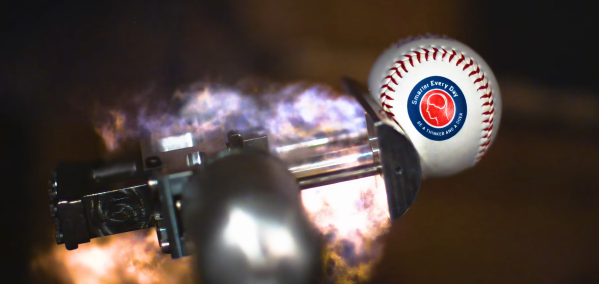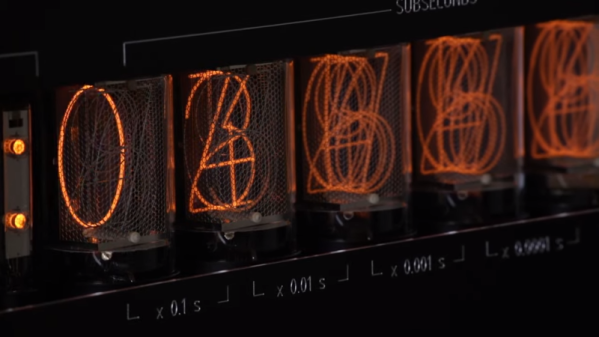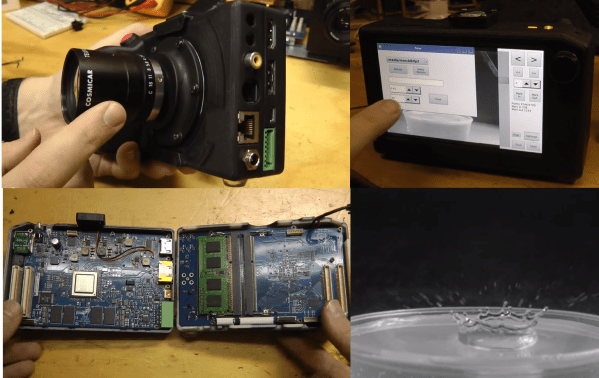Mark it on your calendars, folks — this is the week that the term RUD has entered the public lexicon. Sure, most of our community already knows the acronym for “rapid unscheduled disassembly,” and realizes its tongue-in-cheek nature. But given that the term has been used by Elon Musk and others to describe the ignominious end of the recent Starship test flight, it seems like RUD will catch on in the popular press. But while everyone’s attention was focused on the spectacular results of manually activating Starship’s flight termination system to end its by-then uncontrolled flight at a mere 39 km, perhaps the more interesting results of the launch were being seen in and around the launch pad on Boca Chica. That’s where a couple of hundred tons of pulverized reinforced concrete rained down, turned to slag and dust by the 33 Raptor engines on the booster. A hapless Dodge Caravan seemed to catch the worst of the collateral damage, but the real wrath of those engines was focused on the Orbital Launch Mount, which now has a huge crater under it.
High speed camera5 Articles
Going For The Home Run Record With Explosive Help
The baseball home run distance challenge for crazy engineers is really heating up, with the two main (only?) competitors joining forces. [Shane] of [Stuff Made Here] and [Destin] of [Smarter Every Day] did a deep dive into [Shane]’s latest powder charged baseball bat, designed to hit a ball 600+ feet.
[Shane] built two new versions of his bat this time, using the lessons he learned from his previous V1 and V2 explosive bats. It still uses blank cartridges, but this time the max capacity was increased from three to four cartridges. For V3 a section of the bat was removed, and replaced with a four-bar linkage, which allowed the entire front of the bat to move. The linkage integrated a chamber for four blank cartridges that could be loaded almost like a double barrel shotgun and closed with a satisfying snap. Unfortunately the mass of the moving section was too much for the welds, and the entire front broke off on the first test, so the design was scrapped.
V4 returned to the piston concept of the initial version, except V4 contains two parallel pistons, in a metal bat, with a larger hitting surface. With two cartridges it worked well, but parts started breaking with three and four, and required multiple design updates to fix. [Destin] covered the physics of the project and took some really cool high speed video. He and [Jeremy Fielding] hold the current distance record of 617 ft with their crazy Mad Batter. Unfortunately on [Shane]’s final distance attempt the bat broke again, and the ball was lost in a field with tall grass beyond the 600-foot mark, so they could not confirm if the record was actually broken.
[Destin] and his team still remain the undisputed baseball velocity record holders, with their supersonic baseball canon. It sounds like there might be another collaboration between [Destin] and [Shane] in the future, and we’re definitely looking forward to the results of that crazy venture. Continue reading “Going For The Home Run Record With Explosive Help”
Custom Nixies Perform When Cranked Up To 100,000 Hertz
With the popularity of Nixie clocks, we’d be forgiven for thinking that the glowing tubes are only good for applications with a stately pace of change. But we forget that before they became the must-have hobbyist accessory, Nixies were used in all kinds of scientific instruments, from frequency counters to precision multimeters. In such applications, update rates in the hundreds or thousands of Hertz aren’t uncommon, and the humble Nixie handled display refreshes with ease.
But what about refreshing a Nixie at 100 kHz? That was the question put to artisanal Nixie maker [Dalibor Farný] by a client who wanted a timer to calibrate high-speed cameras. It was a feat that [Dalibor] wasn’t sure his custom-made tubes could handle. The video below shows his efforts to find out.
If you ever wanted to know about the physics of gas-discharge displays like the Nixie, the fifteen minutes starting at about 5:13 will give you everything you need. That basic problem boils down to the half-life of excited neon, or how long it takes for half the population of excited molecules to return to the ground state. That, in turn, dictates how long a given cathode will continue to visibly glow after it’s turned off, which determines how many digits will appear illuminated at once.
To answer that, they engaged a company in Prague with a camera capable of a mind-blowing 900,000 frames per second. Even though they found a significant afterglow period for each cathode, even at 100 kHz it’s clear which digit is the one that’s currently illuminated. They also looked at the startup of digits in a cold Nixie versus one that’s warmed up, leading to some fascinating footage at around 26:30.
We appreciate [Dalibor]’s attention to detail, not only in the craftsmanship of his custom tubes but in making sure they’re going to do their job. He recently did a failure analysis on some of his high-end clocks that showed the same care for his product and his brand.
Continue reading “Custom Nixies Perform When Cranked Up To 100,000 Hertz”
High-Speed Camera Plus Lawnmower Equals Destructive Fun
I hate gratuitous destruction videos. You know, the ones that ask “what happens if we drop a red-hot ball of Plutonium onto a bag of Cheetos?” There’s a lot of smoke, flames and a big pile of ad revenue for the idiots behind it.
This destruction video is a little different, though. [Tesla 500] wanted to mount his high-speed camera onto a rotating blade, but without destroying the camera. In this video, he documents the somewhat nerve-wracking process of building a rig that spins a $3000 camera at several thousand revolutions per second minute. It’s all about the balance, about building a rig that balances the weight of the camera and the blade properly at high speed.
It took several attempts to get it right, and [Tesla 500] shows how he tested and refined each version, including shifting weights to account for the different densities of the camera itself, which has the heavy batteries at one side. And then he drops things onto the blade to see what they look like when sliced. Naturally.
Continue reading “High-Speed Camera Plus Lawnmower Equals Destructive Fun”
[Tesla500] Builds A High-Speed Video Camera
[Tesla500] has a passion for high-speed photography. Unfortunately, costs for high-speed video cameras like the Phantom Flex run into the tens or even hundreds of thousands of dollars. When tools are too expensive, you do the only thing you can – you build your own! [Tesla500’s] HSC768 is named for the data transfer rate of its image sensor. 768 megapixels per second translates to about 960MB/s due to the 10 bit pixel format used by the On Semiconductor Lupa1300-2 image sensor.
This is actually [Tesla500’s] second high-speed camera, the first was HSC80, based upon the much slower Lupa300 sensor. HSC80 did work, but it was tied to an FPGA devboard and controlled by a PC. [Tesla500’s] experience really shows in this second effort, as HSC768 is a complete portable system running Linux with a QT based GUI and a touchscreen. A 3D printed case gives the camera that familiar DSLR/MILC shape we’ve all come to know and love.
The processor is a Texas Instruments TMS320DM8148 DaVinci, running TI’s customized build of Linux. The DaVinci controls most of the mundane things like the GUI, trigger I/O, SD card and SATA interfaces. The real magic is the high-speed image acquisition, which is all handled by the FPGA. High-speed image acquisition demands high-speed memory, and a lot of it! Thankfully, desktop computers have given us large, high-speed DDR3 ram modules. However, when it came time to design the camera, [Tesla500] found that neither Xilinx nor Altera had a FPGA under $1000 USD with DDR3 module support. Sure, they will support individual DDR3 chips, but costs are much higher when dealing with chips. Lattice did have a low-cost FPGA with the features [Tesla500] needed, so a Lattice ECP3 series chip went into the camera.
The final result looks well worth all the effort [Tesla500] has put into this project. The HSC768 is capable of taking SXGA (1280×1024) videos at 500 frames per second, or 800×600 gray·scale images at the 1200 frames per second. Lower resolutions allow for even higher frame rates. [Tesla500] has even used the camera to analyze a strange air oscillation he was having in his pneumatic hand dryer. Click past the break for an overview video of the camera, and the hand dryer video. Both contain some stunning high-speed sequences!
Continue reading “[Tesla500] Builds A High-Speed Video Camera”
















